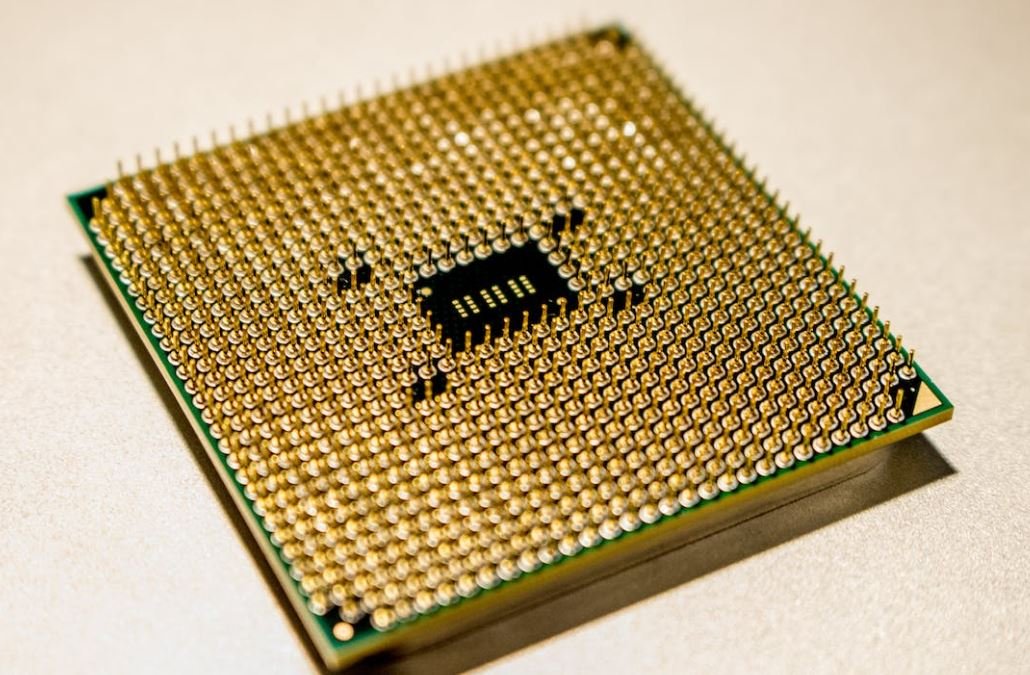Model Building with Covalent Compounds
Model building is a useful tool in science education that allows students to visualize and understand the structures of covalent compounds. Covalent compounds are formed when atoms share electrons with each other, creating strong bonds that hold the atoms together. By building models of these compounds, students can gain a better understanding of their three-dimensional structure and the nature of chemical bonding.
Key Takeaways:
- Model building helps students visualize the three-dimensional structures of covalent compounds.
- Covalent compounds form through the sharing of electrons between atoms.
- Building models can deepen students’ understanding of chemical bonding.
Covalent compounds consist of nonmetal atoms that share electrons. These compounds tend to have lower melting and boiling points compared to ionic compounds, as the intermolecular forces between covalent molecules are weaker. Additionally, covalent compounds can exist in different states of matter, including solids, liquids, and gases, depending on the strength of their intermolecular forces.
*Covalent compounds are diverse and can include simple molecules like water (H2O), as well as complex polymers like DNA.*
When building models of covalent compounds, it is essential to follow certain rules. Each atom is represented by a specific color, typically determined by the element it represents. Bonds between atoms are represented by connecting them with sticks or lines. The number of bonds an atom can form is determined by its valence electrons, which are the electrons in the outermost energy level of an atom. Building models can help students identify the bonding patterns in covalent compounds.
Table 1: Examples of Covalent Compounds
| Compound | Chemical Formula | State at Room Temperature |
|---|---|---|
| Water | H2O | Liquid |
| Methane | CH4 | Gas |
| Carbon dioxide | CO2 | Gas |
The properties of covalent compounds can vary greatly depending on their structure and the type of atoms involved. For example, molecules with polar covalent bonds will have different properties than those with nonpolar covalent bonds. Polar molecules have regions of partial positive and partial negative charges, which can result in unique behaviors such as water’s ability to dissolve many substances or the way oil and water do not mix.
- Covalent compounds have diverse properties due to the different combinations of atoms and bonding patterns.
- The presence of polar covalent bonds can lead to unique properties in some covalent compounds.
- *Water molecules exhibit hydrogen bonding, resulting in stronger intermolecular forces and higher boiling points compared to other similar covalent compounds.*
Model building can also be used to illustrate the concept of resonance in covalent compounds. Resonance occurs when there are multiple ways to arrange the electrons in a molecule, resulting in the delocalization of electrons across multiple atoms. This phenomenon is commonly observed in organic compounds and is important for understanding their reactivity and stability.
Table 2: Covalent Compound Resonance Structures
| Compound | Resonance Structures |
|---|---|
| Benzene | Images of multiple ring structures |
| Nitrate ion | Images of different arrangements of electrons |
By incorporating model building into science education, students can develop a more comprehensive understanding of covalent compounds and their significance in various fields of chemistry. Whether in organic chemistry, biochemistry, or materials science, the ability to visualize and manipulate models can greatly enhance comprehension.
- Model building aids in understanding the concept of resonance in covalent compounds.
- Resonance structures demonstrate the delocalization of electrons in certain molecules.
- *Understanding resonance is crucial in predicting the behavior and reactivity of organic compounds.*
In conclusion, model building with covalent compounds is an effective educational technique for deepening students’ understanding of chemical bonding and three-dimensional structures. It allows students to visualize complex concepts and facilitates the development of critical thinking skills. By integrating model building into science education, students can better grasp the fundamental principles of chemistry and apply them to more complex chemical systems.

Common Misconceptions
Misconception 1: Model building is only for chemistry students
One common misconception is that model building is only for those studying chemistry. In reality, model building with covalent compounds can be a valuable learning tool for individuals in various fields. For example, architects can benefit from using models to visualize molecular structures for designing new materials. Additionally, environmental scientists can use models to understand the behavior of covalent compounds in natural systems.
- Model building is a useful tool for architects to visualize molecular structures for designing new materials.
- Models can help environmental scientists understand the behavior of covalent compounds in natural systems.
- Model building can be beneficial for individuals in various fields, not just chemistry students.
Misconception 2: Models are an accurate representation of reality
Another misconception is that models of covalent compounds are always an accurate representation of reality. However, models are simplified representations that help us understand the behavior of these compounds. They do not capture every intricate detail and can exhibit limitations in terms of scale or complexity. It is important to remember that models are tools for learning and are not meant to represent real-life structures exactly.
- Models are simplified representations of covalent compounds that help us understand their behavior.
- Models may have limitations in terms of scale or complexity.
- It is important to recognize that models are not meant to represent real-life structures exactly.
Misconception 3: Model building is a waste of time
Some people may have the misconception that model building is a waste of time and that it has limited practical applications. However, model building with covalent compounds can actually be a valuable tool for problem-solving and scientific research. Models help scientists and researchers test hypotheses, simulate reactions, and predict the behavior of covalent compounds in different scenarios. They provide insights that can contribute to the development of new technologies and advancements in various industries.
- Model building helps scientists test hypotheses and simulate reactions.
- Models can be used to predict the behavior of covalent compounds in different scenarios.
- Models contribute to the development of new technologies and advancements in industries.
Misconception 4: Model building is only for visual learners
Some individuals believe that model building with covalent compounds is solely for visual learners who benefit from visual representations. However, model building engages multiple senses and can be beneficial for different learning styles. Kinesthetic learners, for example, can benefit from the hands-on experience of building and manipulating models. Additionally, auditory learners can enhance their understanding by discussing models and listening to explanations.
- Model building engages multiple senses, not just visual.
- Kinesthetic learners benefit from the hands-on experience of building and manipulating models.
- Auditory learners can enhance their understanding by discussing models and listening to explanations.
Misconception 5: Model building is only useful for basic concepts
Some people may believe that model building is only useful for understanding basic concepts of covalent compounds. However, models have applications in advanced scientific research and complex problem-solving. They can be used to study intricate molecular structures, analyze chemical reactions, and explore the behavior of covalent compounds in intricate systems. Model building is a versatile tool that can be adapted to different levels of complexity and depth of understanding.
- Models can be used to study intricate molecular structures and analyze chemical reactions.
- Model building is useful for advanced scientific research and complex problem-solving.
- Model building can be adapted to different levels of complexity and depth of understanding.

Introduction
In this article, we explore the fascinating world of model building with covalent compounds. Covalent compounds are formed when two or more atoms share electrons, resulting in the formation of strong bonds. These compounds play a crucial role in various fields such as medicine, materials science, and electronics. Through the following tables, we will delve into different aspects of covalent compounds, their properties, and their applications.
Table 1: Some Common Covalent Compounds
Here, we present a selection of common covalent compounds and their chemical formulas. These compounds are widely used and encountered in everyday life.
Table 2: Covalent Radius of Selected Elements
This table illustrates the covalent radii of various elements, indicating their size when forming covalent bonds. The covalent radius influences the strength and properties of covalent compounds.
Table 3: Melting Points of Covalent Compounds
Covalent compounds exhibit a range of melting points due to differences in bond strength and intermolecular forces. The table showcases the melting points of select covalent compounds.
Table 4: Applications of Covalent Compounds in Medicine
Covalent compounds find extensive use in the field of medicine. This table highlights the applications of these compounds in pharmaceuticals, drug delivery systems, and medical imaging.
Table 5: Electrical Conductivity of Covalent Compounds
While most covalent compounds are poor conductors of electricity, some exhibit unique electrical properties. The table demonstrates the electrical conductivity of selected covalent compounds.
Table 6: Covalent Compounds and their Bond Angles
Covalent compounds often possess distinct bond angles that determine their molecular structure and shape. This table features various covalent compounds and their corresponding bond angles.
Table 7: Biomolecules Composed of Covalent Compounds
Covalent compounds form the building blocks of complex biomolecules essential for life. The table showcases the compositions of important biomolecules like DNA, proteins, and carbohydrates.
Table 8: Covalent Compounds in Industrial Applications
The versatility of covalent compounds extends to numerous industrial applications. This table presents examples of covalent compounds employed in sectors such as manufacturing, petrochemicals, and electronics.
Table 9: Solubility of Covalent Compounds in Different Solvents
The solubility of covalent compounds can vary depending on the specific solvent used. This table illustrates the solubility of selected covalent compounds in different solvents.
Table 10: Covalent Compounds and their Toxicology
Understanding the toxicology of covalent compounds is crucial for ensuring their safe handling and usage. The table presents data on the toxicity of various covalent compounds.
Conclusion
Model building with covalent compounds offers a captivating exploration of the diverse properties, applications, and significance of these compounds. From their applications in medicine and industry to their role in essential biomolecules, covalent compounds play an integral part in shaping our modern world. By expanding our knowledge of covalent compounds, we can unlock new possibilities in science and technology, ensuring a brighter future.
Frequently Asked Questions
What are covalent compounds?
How are covalent compounds different from ionic compounds?
How can I build models of covalent compounds?
What is the VSEPR theory?
How can I determine the molecular formula of a covalent compound?
Can covalent compounds have multiple bonds?
What are some examples of covalent compounds?
Do covalent compounds have high or low melting and boiling points?
Can covalent compounds conduct electricity?
What are the applications of covalent compounds in daily life?




